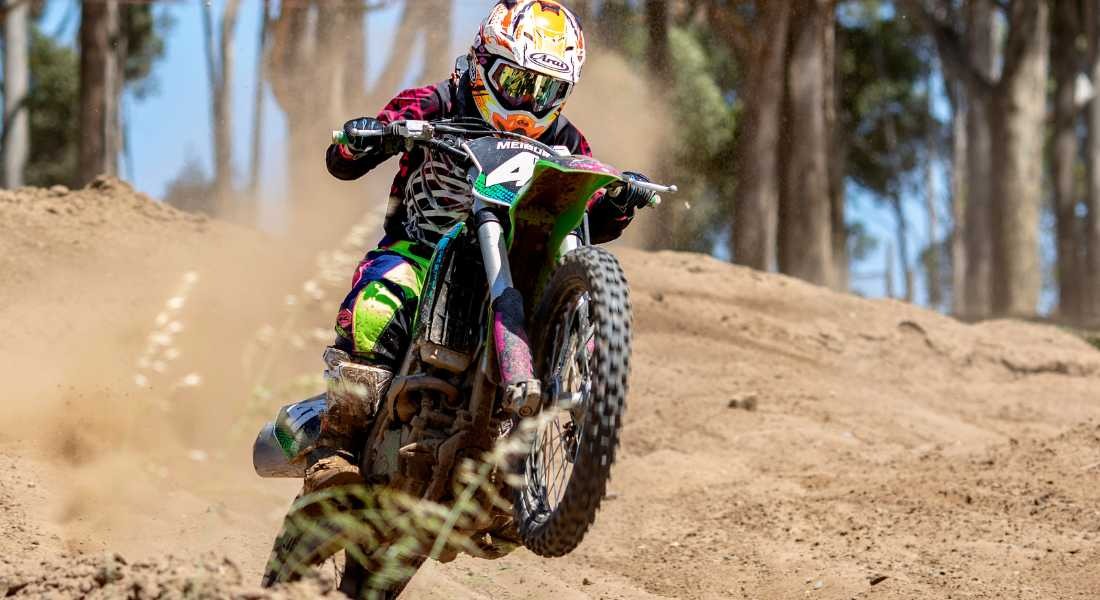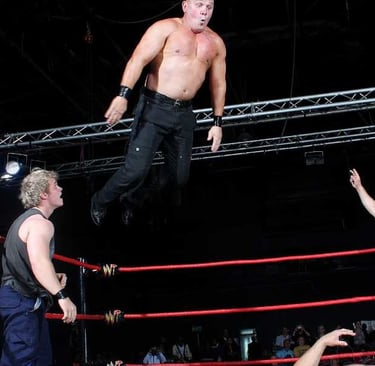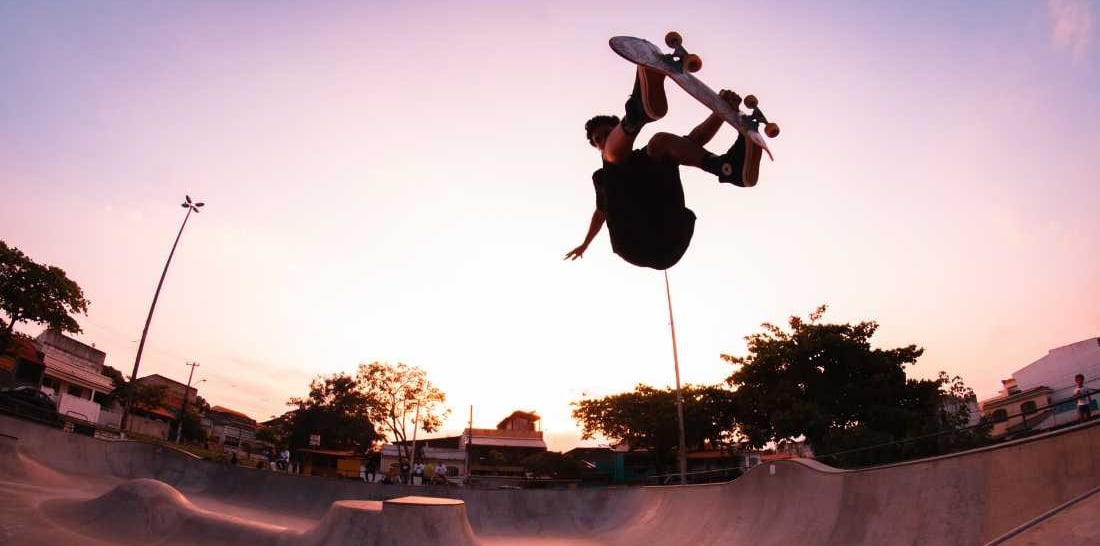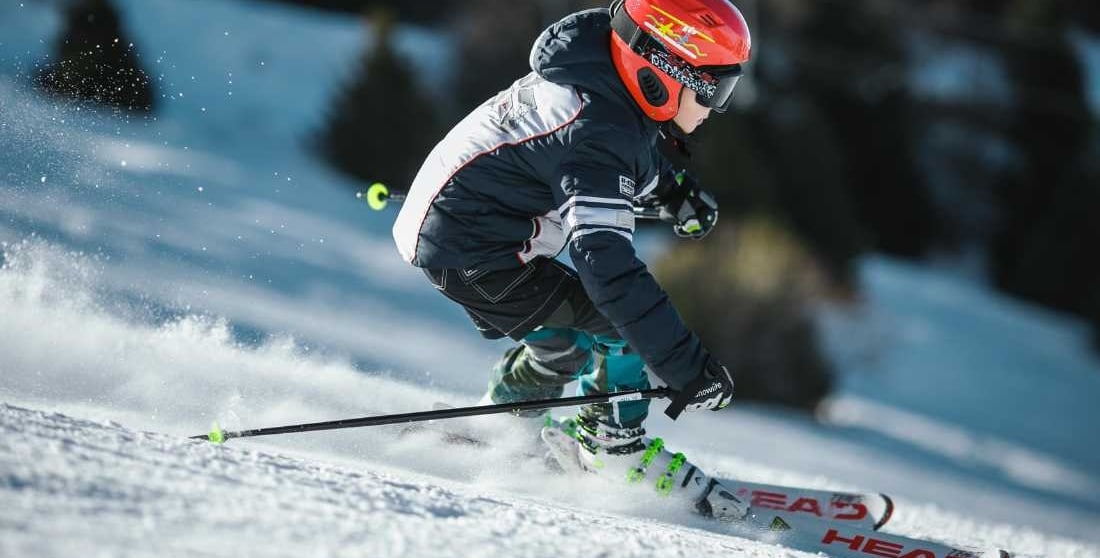10 Creative Sports Photography Ideas to Elevate Your Portfolio
Enhance your sports photography skills with essential techniques and creative ideas to elevate your portfolio: master action shots and gear recommendations.
George Eleter
6/6/202413 min read


Creative Sports Photography: Techniques & Ideas for Dynamic Shots
Creative sports photography transforms dynamic moments into captivating visuals, making your portfolio stand out. Capturing fast-paced action and raw emotions on the field presents both excitement and challenges.
This article dives into essential techniques and creative ideas to enhance your sports photography skills. Prepare to master action shots, explore innovative equipment, and experiment with diverse perspectives to elevate your portfolio.
If you're looking to specialize in a specific genre within sports photography, such as snowboarding photography, you'll find valuable insights from experienced photographers like George Eleter. George is known for his expertise in extreme sports photography and shares tips on equipment, techniques, and overcoming challenges specific to capturing the thrilling moments on the slopes. His work is a testament to the power of pushing the boundaries in sports photography, so be sure to check it out!
By learning from established photographers like George Eleter, who have honed their skills through extensive experience and experimentation, you can gain valuable knowledge that will help you stand out in this competitive field. So, whether you're just starting or looking to level up your game, this article will provide the guidance you need to excel in sports photography.
1. Mastering Action Photography
Action photography is the heartbeat of sports photography, capturing the intense movement and split-second moments that define athletic prowess. In sports photojournalism, these images tell compelling stories and convey the raw emotion of competition. From an artistic standpoint, action shots highlight the grace and power of athletes in motion.
To capture successful action shots, several key elements demand attention:
Timing: Anticipate the peak action to freeze dramatic moments.
Anticipation: Understand the sport to predict movements and be ready for critical plays.
Focusing Techniques: Use continuous autofocus (AI Servo/AF-C) to track moving subjects accurately.
Mastering these aspects will elevate your photography, ensuring each image resonates with energy and precision. For more insights on capturing dynamic sports moments, you might find George Eleter's Guide to Skateboarding Photography, renowned for his vibrant and dynamic extreme sports photography, particularly helpful.
2. Must-Have Equipment for Action Photography
To excel in action photography, having the right gear is crucial. The following are key equipment recommendations for capturing those split-second moments:
Camera Bodies:
Canon Cameras: The Canon EOS-1D X Mark III offers exceptional autofocus capabilities and a high-speed burst rate of up to 20 frames per second (fps). It's a top choice for many professional sports photographers.
Nikon Cameras: The Nikon D6 provides outstanding focus tracking and continuous shooting mode, delivering up to 14 fps. It's designed for capturing fast-moving subjects with precision.
Sony Cameras: The Sony A9 II stands out with its real-time tracking and continuous shooting at 20 fps. Its silent shutter mode is also advantageous when photographing indoor sports events.
Key Accessories:
Telephoto Lenses: Investing in quality telephoto lenses, such as the Canon EF 70-200mm f/2.8L IS III USM or the Nikon AF-S NIKKOR 70-200mm f/2.8E FL ED VR, allows you to capture distant action with clarity. These lenses offer fast and accurate focusing, which is essential for dynamic sports shots.
Memory Cards: High-speed memory cards like the SanDisk Extreme PRO SDXC UHS-II or the Lexar Professional 2000x SDHC/SDXC UHS-II are vital. Fast write speeds ensure that your camera can handle continuous shooting without buffering issues.
Equipped with advanced autofocus systems and capable of high-speed bursts, these tools help you nail those critical moments in sports photography.


3. Tips for Capturing Dynamic Sports Moments
Capturing the energy and intensity of sports requires attention to positioning and framing, optimal lighting, and an understanding of sports photography techniques.
Positioning and Framing
Choose strategic positions: Place yourself where the action is most likely to happen. For example, in soccer, positioning near the goal can yield exciting moments.
Use leading lines: Utilize elements like tracks, lanes, or field lines to guide the viewer’s eye towards the subject.
Frame with context: Incorporate elements such as crowds or stadium features to add depth and context to your images.
Optimal Lighting
Natural light can be a game-changer in sports photography. Here are some tips:
Golden hour advantage: Shoot during early morning or late afternoon for soft, golden light that enhances textures and colors. This guide on predicting sunrise and sunset colors might be helpful.
Avoid harsh midday sun: The overhead sun can create unflattering shadows. If shooting at noon is unavoidable, seek shaded areas or use fill flash.
Utilize shadows creatively: Play with shadows cast by athletes to add drama and dimension to your shots.
Sports Photography Techniques
Anticipate the action: Predict movements based on the flow of the game. This article on burst mode usage might provide some insight on capturing peak action moments.
Burst mode usage: Enable burst mode to shoot multiple frames per second, increasing your chances of getting the perfect shot.
Focus tracking: Use continuous autofocus (AI Servo/AF-C) to keep moving subjects sharp. Here's a guide on configuring your camera's autofocus for fast action that you might find useful.
Combining these strategies will help you deliver powerful and dynamic sports photographs that truly stand out.
4. Creative Sports Photography Ideas
1. Freeze the Action with High-Speed Sync Flash
High-speed sync flash is a powerful technique used to capture fast-moving subjects in sports photography. This method allows you to freeze action in its tracks, creating sharp, dramatic images that stand out in your portfolio.
Equipment Setup:
High-Speed Sync Flash: Invest in a flash unit that supports high-speed sync (HSS). This feature enables you to use flash at shutter speeds higher than your camera's standard sync speed.
Camera Body: Ensure your camera is compatible with HSS and offers advanced autofocus capabilities to keep up with fast movements.
Lens: A telephoto lens (70-200mm) is ideal for capturing distant action while maintaining image clarity.
Recommended Scenarios:
Certain sports scenarios benefit greatly from this technique, such as:
Soccer or Football Games: Freezing the moment when a player kicks the ball.
Basketball Matches: Capturing a player mid-dunk.
Track Events: Highlighting the precise moment a runner crosses the finish line.
Example Images:
Here's an example of how high-speed sync flash can transform your sports photography:
Using HSS to capture a soccer player mid-kick.
The dramatic effect achieved through high-speed sync flash not only freezes the action but also isolates your subject against the background. This creates a striking contrast, emphasizing the intensity and motion of the sport.
In summary, incorporating high-speed sync flash into your sports photography arsenal can elevate your images significantly. It requires some investment in equipment and practice to master, but the results are well worth it. Experiment with different sports and scenarios to see the full potential of this technique and watch your portfolio come alive with dynamic, sharp action shots.
2. Panning to Create Dynamic Images
Mastering the panning technique is essential for conveying a sense of motion and speed in your sports photography. This method involves moving your camera horizontally along with a moving subject, maintaining sharpness on the subject while blurring the background to create a dynamic effect.
Key Steps for Effective Panning:
Shutter Speed Settings: Start with a slower shutter speed, typically between 1/30th and 1/60th of a second. Experiment within this range to find the sweet spot that balances motion blur and subject sharpness.
Camera Movement: Keep your movements smooth and consistent. Follow the subject through the viewfinder, matching their speed as accurately as possible. Practice is key to mastering this fluid motion.
Focus Mode: Use continuous autofocus (AF-C) to maintain focus on the moving subject. This helps in keeping the subject sharp despite camera movement.
Tips for Sharp Subject Details:
Stance and Grip: Adopt a stable stance with your feet shoulder-width apart. Hold your camera firmly but not rigidly—flexibility in your grip allows smoother panning.
Follow Through: Continue panning even after pressing the shutter button. This follow-through ensures smoother motion and better alignment with the moving subject.
Practice: Regular practice under different lighting conditions and with various subjects sharpens your skills and improves results.
Examples of successful panning include capturing cyclists during a race or runners mid-sprint, where their surroundings blur into streaks of colour, emphasizing their speed and energy.
3. Use Motion Blur for a Dramatic Effect
Intentionally blurring motion can add depth and storytelling elements to your sports photos, making them more dynamic and interesting. Here's how to effectively use this technique:
1. Adjust Your Shutter Speed
Experiment with slower shutter speeds to capture the motion blur effect. For example, using a shutter speed of 1/30 or slower can create a dramatic sense of movement in your images. Understanding the relationship between shutter speed, focal length, and motion blur is crucial in achieving the desired results.
2. Tailor Your Approach to Each Sport
Different sports require different techniques when it comes to capturing motion blur. Here are some specific tips for popular sports:
Running Events: Focus on the runner and let the background blur, emphasizing their speed and agility.
Cycling: Position yourself at an angle where you can track the cyclist's path, creating light trails and enhancing the perception of speed. Techniques such as panning, as explained in this guide on how to shoot fast-moving subjects without blur, can be particularly effective.
Example images often showcase athletes in mid-motion with blurred backgrounds, highlighting their speed and effort while keeping them in focus. This technique not only captures the action but also conveys the energy and intensity of the sport.
By incorporating motion blur into your creative sports photography ideas, following the unwritten rules of sport photography, you can produce visually compelling images that stand out in any portfolio.
4. Experiment with Different Angles and Perspectives
Exploring unconventional angles and unique perspectives can elevate your sports photography, making it stand out. By breaking away from traditional viewpoints, you introduce fresh visual narratives that capture the audience's attention.
Tips for Creative Sports Photography:
Low Angles: Shooting from a low angle can make athletes look more powerful and dominant. This technique is especially effective in sports like basketball or football.
High Angles: Utilize high vantage points to provide an overview of the action. Ideal for sports such as soccer or tennis where you can capture the entire field or court.
Wide Shots: Capture the grandeur of the venue along with the action. This is particularly impactful in stadiums or large outdoor events.
Close-ups: Focus on details like an athlete's hands gripping equipment or the texture of a uniform. Adds a layer of intimacy and detail to your portfolio.
Using these composition techniques, you can create visually engaging sports images that resonate with viewers. Exploring different angles in sports photography not only diversifies your portfolio but also enhances your storytelling capabilities.


5. Focus on Athlete's Expressions and Emotions
Capturing the human element in sports photography involves zeroing in on athletes' expressions and body language. These moments of raw emotion not only tell a story but also connect viewers to the intensity and passion of the sport.
Techniques for capturing authentic emotions:
Close-Up Shots: Use a zoom lens or get physically closer to frame the athlete's face tightly. This technique reveals intricate details such as sweat, strain, and determination.
Anticipation: Stay vigilant and anticipate key moments—like a goal celebration or a defeat reaction—to capture genuine emotions.
Continuous Shooting Mode: Enable burst mode on your camera to take multiple shots in quick succession. This increases your chances of capturing that perfect, fleeting moment.
Focus on Body Language: Sometimes, an athlete's posture or gestures can be more expressive than their face. Look for clenched fists, outstretched arms, or other telling movements.
Including these emotional elements can elevate your sports photography portfolio by adding depth and relatability.
6. Enhance Your Sports Photography with the Environment
Incorporating environmental elements can make your sports photography more interesting by adding depth and context to your images. By carefully including the surroundings, you create a more complete story that connects with viewers.
Here are some ways to incorporate environmental elements into your sports photography:
Highlight the Venue: Capture the stadium, arena, or field to provide a sense of place. This can be particularly impactful in iconic locations.
Weather Conditions: Utilize rain, snow, or fog for dramatic effects. These elements can evoke emotions and highlight the athletes’ endurance.
Crowd Reactions: Include fans in the background to convey the atmosphere and excitement of the event. Reactions from spectators can add a layer of narrative to your shots.
Natural Landscapes: For outdoor sports, use the natural landscape to frame your subjects. Mountains, trees, or bodies of water can enhance the visual appeal.
Urban Environments: Street sports like skateboarding or parkour benefit from showcasing urban settings. Graffiti walls or architectural features can add an edgy feel.
Examples of environmental storytelling include:
capturing a runner against a sunrise backdrop
a surfer riding waves under stormy skies
These elements not only make the images aesthetically pleasing but also amplify the story behind each moment captured.
7. Experiment with Long Exposures
Exploring long exposure techniques can significantly enhance your creative sports photography portfolio. This approach allows you to capture unique sports visuals, such as light trails and ghosting effects, creating a sense of motion and energy in your images.
Key considerations for long exposure sports photography:
Camera Settings: Utilize a slow shutter speed (e.g., 1/15th to several seconds) to achieve the desired effect. Adjust ISO and aperture settings accordingly to maintain proper exposure.
Sturdy Tripod: Essential for stabilizing the camera during long exposures, preventing unwanted blurriness.
Remote Shutter Release: Helps minimize camera shake when triggering the shutter.
Experimenting with different angles and motions can yield dramatic results. For instance, capturing the motion of a cyclist at night with light trails following their path or documenting a runner's movement through ghosting effects. These techniques add an artistic layer to your sports photography, making your work stand out.
8. Focus on Details and Close-ups
Capturing the intricate details in sports photography can elevate your portfolio by drawing attention to often-overlooked elements. Close-up shots reveal textures, moments of impact, and finer aspects of the action that tell a deeper story.
Macro Lenses for Intricate Details
Using macro lenses allows you to capture the fine details that standard lenses might miss:
Textures: Highlight the roughness of a basketball, the grains of sand in beach volleyball, or the fabric weave in a jersey.
Impact Moments: Focus on the exact moment when a tennis racket hits the ball or a foot strikes the ground.
Techniques for Effective Close-ups
Focus on Equipment: Capture the fine details of sports gear like the wear on running shoes or the grip on a golf club.
Athlete Features: Zoom in on an athlete’s eyes filled with determination or their hands gripping equipment.
Close-up photography uncovers hidden stories within the larger action, adding depth and richness to your sports portfolio.
9. Use Creative Composition Techniques
Applying fundamental composition principles can significantly enhance your sports photography, making your images stand out. Here are two techniques you can use:
The rule of thirds: This is a classic technique where you divide the frame into nine equal parts using two horizontal and two vertical lines. Positioning key elements along these lines or at their intersections can create more balanced and engaging photos.
Leading lines: These are lines in the environment that guide the viewer's eye towards the main subject of the photograph. Whether it's the lines on a basketball court or the track lanes in a sprint, these elements can add depth and focus to your shots.
Balancing composition with the spontaneity of sports moments requires practice. While adhering to these principles, maintain flexibility to capture unpredictable actions. A well-composed image that also captures the raw energy of a sports event can be both aesthetically pleasing and emotionally powerful.
10. Experiment with Post-processing Effects
Enhancing creative sports photography through post-processing can significantly elevate your portfolio. By applying specific techniques like selective color adjustments and adding motion effects, you can transform standard action shots into visually compelling images.
Selective Color Adjustments:
Isolate a particular color in your sports image to highlight key elements such as a team uniform or an athlete's gear.
Use tools like Adobe Lightroom or Photoshop to desaturate the surrounding colors while keeping your chosen hue vibrant.
Adding Motion Effects:
Simulate movement by applying motion blur in post-processing. This can be particularly effective for conveying speed and dynamism.
Utilize software features that allow you to add directional blur, giving the illusion of motion even if the original shot was static.
Balancing creativity with authenticity is crucial when editing sports images. Over-editing can diminish the raw energy and genuine emotions captured during the event. Aim for enhancements that complement the original scene without overshadowing it.
Tools like Lightroom, Photoshop, and other specialized software offer extensive capabilities for refining your photos. Practicing restraint ensures that your creative edits enhance rather than detract from the natural vibrancy of your sports photography.
Conclusion
Exploring these creative sports photography ideas allows you to push the boundaries of your skills and create a standout portfolio.
By incorporating techniques such as high-speed sync flash, panning, and experimenting with different angles, you can capture the excitement and emotion of sports in unique ways.
Share your favorite creative sports photos on social media or within the photography community. Engage with others and showcase your unique vision. Embrace the challenge and let your creativity shine through every shot!


FAQs (Frequently Asked Questions)
What is creative sports photography and how can it make a photographer's portfolio stand out?
Creative sports photography involves capturing dynamic moments in sports in a way that elevates a photographer's portfolio. It allows photographers to share the excitement and challenges of capturing these moments, and in this article, we will discuss essential techniques and creative ideas to enhance your sports photography skills.
What are the key elements to consider for successful action shots in sports photography?
Successful action shots in sports photography require consideration of timing, anticipation, and focusing techniques. These elements are crucial for capturing movement and conveying the energy and intensity of sports moments.
What essential gear is required to excel in action photography?
To excel in action photography, it is important to have suitable camera bodies that offer advanced autofocus capabilities and high-speed burst rates. Additionally, other important accessories like telephoto lenses and memory cards with fast write speeds are recommended.
How can photographers effectively capture the energy and intensity of sports through well-chosen perspectives and framing techniques?
Photographers can effectively capture the energy and intensity of sports by choosing optimal perspectives, framing techniques, and utilizing natural light. These elements contribute to creating compelling and dynamic sports images.
What are some creative ideas for enhancing sports photography?
Some creative ideas for enhancing sports photography include using high-speed sync flash to freeze fast-moving subjects, mastering the panning technique to convey motion, emphasizing motion blur for dramatic effect, experimenting with different angles and perspectives, focusing on athlete's expressions and emotions, incorporating environmental elements for storytelling, experimenting with long exposures, focusing on details and close-ups, using creative composition techniques, and exploring post-processing effects.
How can photographers incorporate environmental elements to enhance the narrative and context of sports images?
Photographers can enhance the narrative and context of sports images by incorporating the surrounding environment. This approach adds depth to the storytelling aspect of sports photography, providing a broader visual context for the athletic performances captured in the images.


